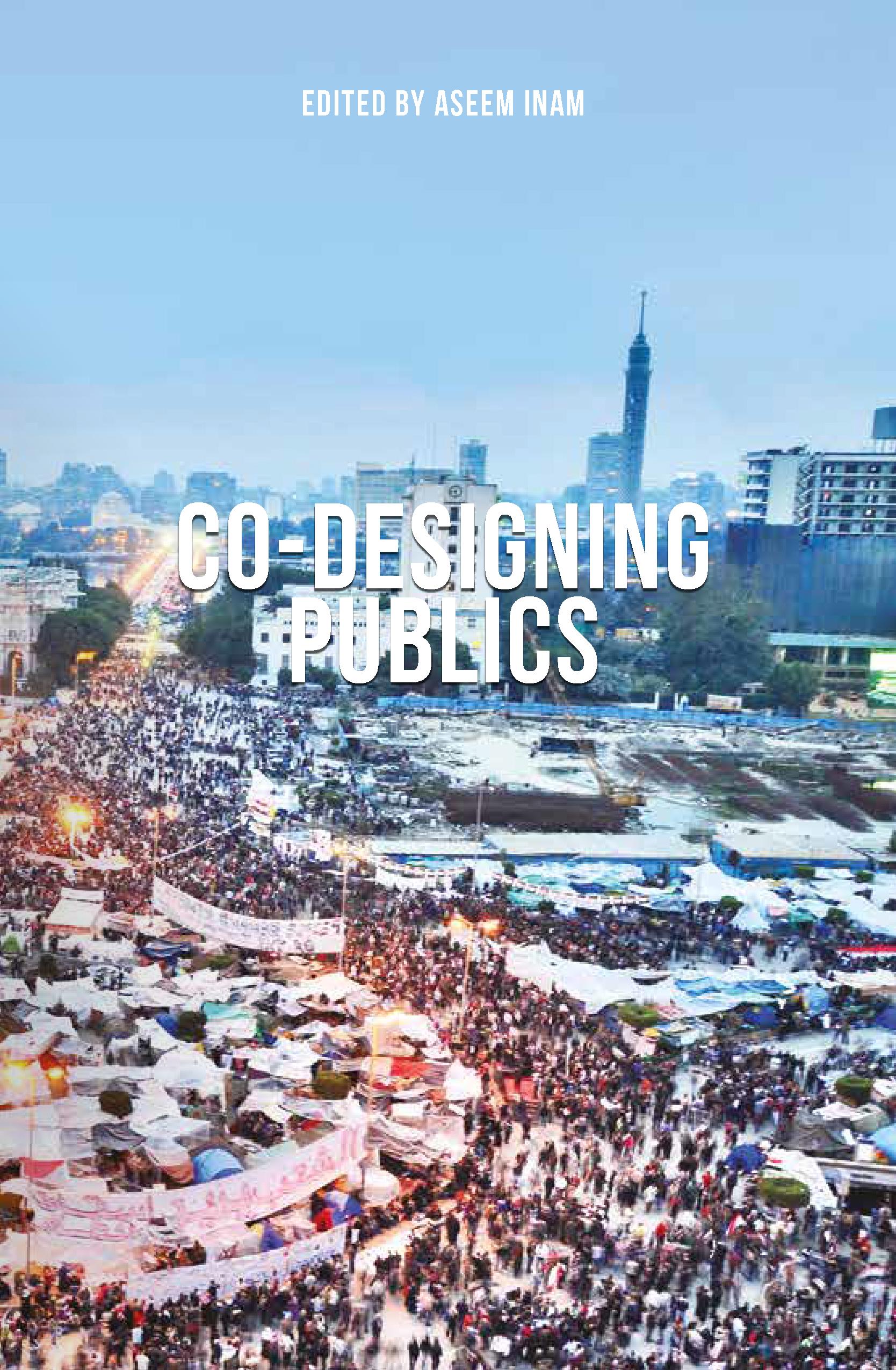
Acknowledgements:
I would like to thank Juan Usubillaga, the Network Administrator of the Co-Designing Publics international research network, for his uncompromising dedication, infectious passion, and tireless efforts. I am also deeply grateful to my fellow members of the network, who are all authors in this book and who contributed immensely to the creation and carrying through of this research project from its inception. At Cardiff University, Samantha Johnson has been an incredible pillar of understanding and unwavering support throughout the process. Finally, at ORO Editions, Jake Anderson has been an excellent colleague and true friend of the book. Thank you all.
The book is dedicated to Elahe, for her extraordinary love.
Table of Contents 01 Co-Designing Publics: A Theoretical and Investigative Overview Aseem Inam ................................................................................ 4 02 Co-Design as Engagement with the City: Rujak Center for Urban Studies, Jakarta Elisa Sutanudjaja and AbdouMaliq Simone 26 03 Public Realm Ethnography: Understanding and Studying the Public Realm Alasdair Jones........................................................................... 39 04 Co-Design as Long-Term Process: Hasiru Dala, Bengaluru Nalini Shekar and Neha Sami 44 05 Co-Design as Contestation of Power: União Nacional por Moradia Popular, São Paulo Evaniza Rodrigues and Fernando Lara ................................... 54 06 Who Really Designs? Marianela D’Aprile 64 07 Co-Design as Resistance: Cambodian Center for Human Rights, Phnom Penh Sopheap Chak and Simon Springer ....................................... 71 08 Co-Design as Participation: Project 90 by 2030, Cape Town Lorna Fuller, Gabriel Klaasen and Charlotte Lemanski 81 09 Subversive Aesthetics in the Americas Macarena Gómez-Barris .......................................................... 91 10 Co-Design against Traditional Power Structures: ASOMEVID, Cali Alexander López, Melanie Lombard and Carlos Tobar 94 11 Do It Responsibly or Don’t Do It at All Panthea Lee ............................................................................. 108 12 Co-Designing Publics International Symposium: Closing Thoughts Charlotte Lemanski................................................................. 115 13 Epilogue Aseem Inam 126
Co-Designing Publics:
A Theoretical and Investigative Overview
01
Aseem Inam
I am Professor and Chair in Urban Design at Cardiff University in the UK, and Director of TRULAB: Laboratory for Designing Urban Transformation, which was founded in New York City. I describe myself as an activist-scholar-practitioner, because being an activist means coming from a mindset that recognizes real change must be systemic and long term, because being a scholar means acknowledging the significance of deep understanding (i.e., research) and of principleand pattern-making (i.e., theory), because being a practitioner means believing in direct action and intervention in cities, and because it is the intertwining of these three aspects that leads to urban transformation. I am also the Principal Investigator of our “Co-Designing Publics” international research network, funded by a grant awarded to us by the UK Arts and Humanities Research Council. The following series of essays in this book are public conversations, based on edited and updated excerpts from the international symposium that was in conducted online in September 2021 with over 350 registered participants.
Premises
The 21st century is truly the urban century by any measure. There exist different ways of understanding and measuring what is the “urban,”1 but what they all share in common is the growing and increasingly critical significance of the role of cities in our world. Given the multiple crises that cities face, such as the climate emergency, urban inequality, inadequate infrastructure, and the COVID-19 global pandemic, this presentation focuses on developing innovative ways in which processes of co-designing publics and producing the public realm on an ongoing basis can more effectively help address these crises.
Three notes of clarification before I continue.
5
First, I deploy the term “urbanism” rather than “urban design” for a number of reasons. Conventional urban design has a long history of having an overly narrow and constrained definition as essentially architecture at a larger scale, with its attendant obsessions with aesthetics and three-dimensional objects while overlooking the larger political-economic structures and dynamics that actually shape cities. Urbanism from a design perspective connotes not only a significant shift in terminology but one in attitude towards a far more critical, transdisciplinary, and engaged approach to the design of cities. Furthermore, a potent question to ask ourselves is not so much “What is urban design?” but “What can urbanism be?” because the second question leads to answers that are future oriented, plural, and based on a much wider range of critical and creative possibilities.
Second, I utilize what I call “categories of convenience.” These categories enable us to specify particular types of phenomena, to investigate them in their contexts, and to better understand their relationalities, all the while acknowledging that such categories contain overlaps and fuzzy boundaries. Examples of such categories of convenience that are relevant here are:
• global south versus the global north.
• the public realm versus the private realm; and
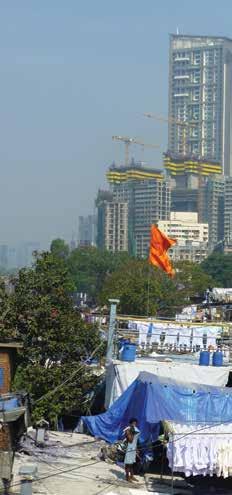
• spatial versus non-spatial aspects of cities.
Third, I will share some images in this presentation that are suggestive about
6
Overview
Co-Designing Publics: A Theoretical and Investigative
Figure 1.1 Dhobi Ghat, Mahalakshmi, Mumbai. Source: Aseem Inam, 2013.
possible implications for urban practices from this theoretical discussion, rather than making a one-to-one literal shift from theory to practice. The images are there as visual backgrounds in order to invoke the power of theory to reflect, to understand, and to suggest pathways towards transformative practice.
Public Realm
Cities are amongst humanity’s greatest creations, and the public realm is arguably their most significant aspect. The public realm
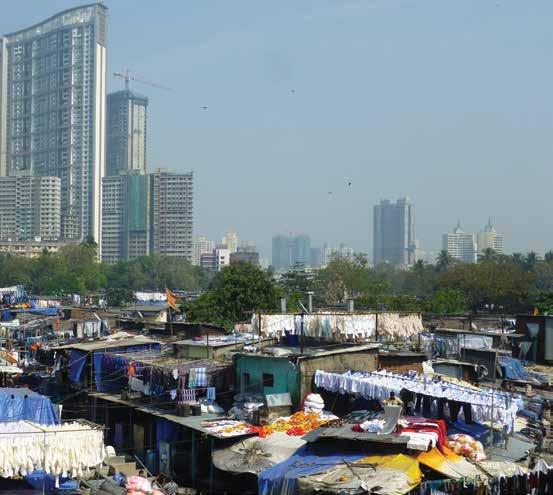
by Aseem Inam
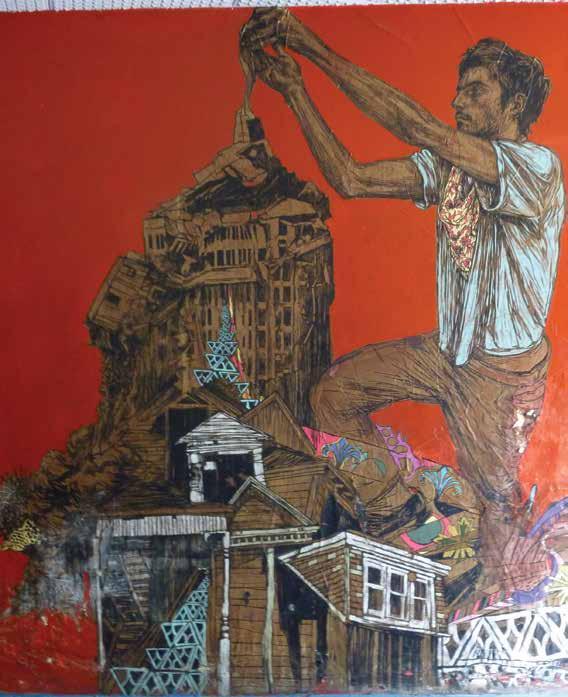
literature or in the practices of the global north. Their spaces—and thereby the public realm—are always in the making because they are never quite done, always being altered, expanded, and elaborated upon.18

Co-Designing Publics
The most potent aspect of the public realm lies in its capacity to co-design publics. Publics never simply exist; they are always created.19 Publics are created (or co-designed by citizens themselves) out of groups of people who are made and remade by the actions of other people. For example, when there is a common concern or desire (that emerges out a crisis such as urban inequality, lack of affordable housing, inadequate infrastructure, or the COVID-19 global pandemic), there is a call to action and groups of people are willing to act upon those concerns or desires, and a public is created. A public is summoned into being. In this manner, co-designing publics is part of an ongoing process of designing and redesigning democracy with the city as its site and its context.20 My work builds on this phenomenon to better understand how informal urbanisms in the public realm can become catalysts for co-designing publics.
As much as the design focus in urbanism tends to be on the creation of spatial products such as buildings, open spaces, and infrastructures,
by Aseem Inam 15
Figure 1.3
Mural in the Ocupação São João in São Paulo. Source: Aseem Inam, 2016.
you have even initiated a wide range of various cultural arts activities. As forms of engagement, how do you see the synergies amongst these different kinds of activities? Moving from the form of the city to other forms of the urban that are yet to take definitive shape, what kinds of engagements can you imagine for these new types of urban territories?
Elisa Sutanudjaja: I’m going to answer the last part of the question, then I will come back to the first part of the question. You see that Jakarta is only this small but then the agglomeration is just like three times of Jakarta and even going further, 120 kilometers to the south. What happens in Jakarta always affects outlying areas. What happens in the hinterland, like a healthy rain season, always affects Jakarta. For people who live outside Jakarta, they have a bit of experience living or even having an activity inside the city.
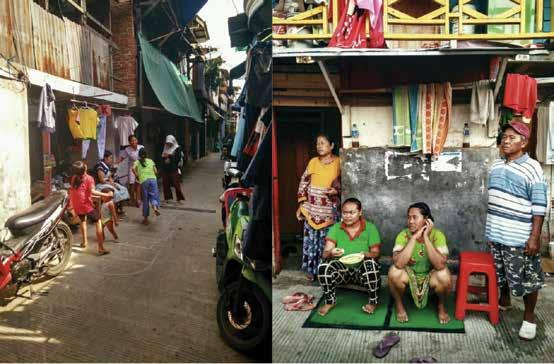
32
Co-Design as Engagement with the City:
Figure 2.2 Example of a kampung and kampung social life in Jakarta. Source: Rujak Center for Urban Studies.
We believe a city is like a network of information where the citizen is actually the backbone of the infrastructure of knowledge. What we do is connect citizens who live in different areas to let them learn from each other, argue with each other, share their problems, and ask other people from different cities to help them solve their problems. It becomes a unifying network that represents what we believe. We are all in this together, whether it’s about mobility, affordable housing, or air pollution. For example, since 2018, I was part of a group of citizens who sued the national government and provincial government about air pollution in Jakarta. As part of this group of plaintiffs, there were 22 people out of 32 total who were from outside Jakarta, living in neighboring cities. This was an act of solidarity because what happens in Jakarta could affect them.
Elisa
Question: Elisa, you said something quite remarkable in the first part of your presentation about unlearning and learning when it comes to political contracts. Is that something that is the ethos of your organization, the Rujak
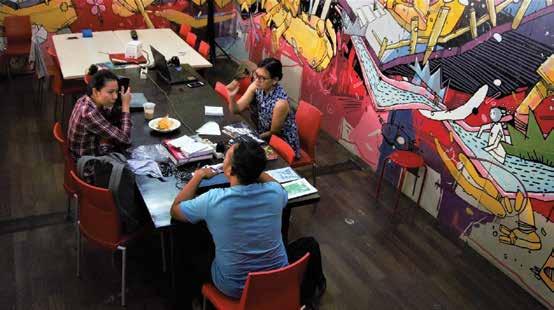 by
Sutanudjaja and AbdouMaliq Simone
Figure 2.3
Example of collective and collaborative efforts.
Source: Rujak Center for Urban Studies.
by
Sutanudjaja and AbdouMaliq Simone
Figure 2.3
Example of collective and collaborative efforts.
Source: Rujak Center for Urban Studies.
Center, or does it emerge out of particular projects? Can you talk a little bit more about this, how it happens, the learning and unlearning?
Elisa Sutanudjaja: The political contract is a typical mode of operation done by the Urban Poor Consortium, which is a national organization with a focus mostly on the urban poor and the informal sector. Rujak was involved in two political contracts alongside them, one in 2012 and the other in 2017. We thought that the 2012 contract would be easier to understand and to be implemented by the government. If the content of the contract is simple, such as something general like better public participation, then it can easily be translated into a different set of rules. But then the government didn’t follow any of that and we also learned it’s difficult to apply. That was a process of unlearning because we thought it would be easier if the contract can be understood by the public, but then it turned out to be difficult to implement. Then, in the second political contract in 2017, we did a very detailed contract containing 30 pages focusing on issues such as, “What are the demands of the citizens and what are the demands of the specific kampungs?”
There are 25 kampungs, so you write the contract specifically based on their needs and negotiate one by one with each kampung. The negotiations were with lawyers, including possibilities for litigation as well as dealing with political issues. Apparently, those kinds of contracts are in fact
Figure 2.4
Jakarta is a large agglomeration with a vast hinterland, including large infrastructure networks and vast bodies of water.
Source: Rujak Center for Urban Studies.
34
Co-Design as Engagement with the City: Rujak Center for Urban Studies, Jakarta
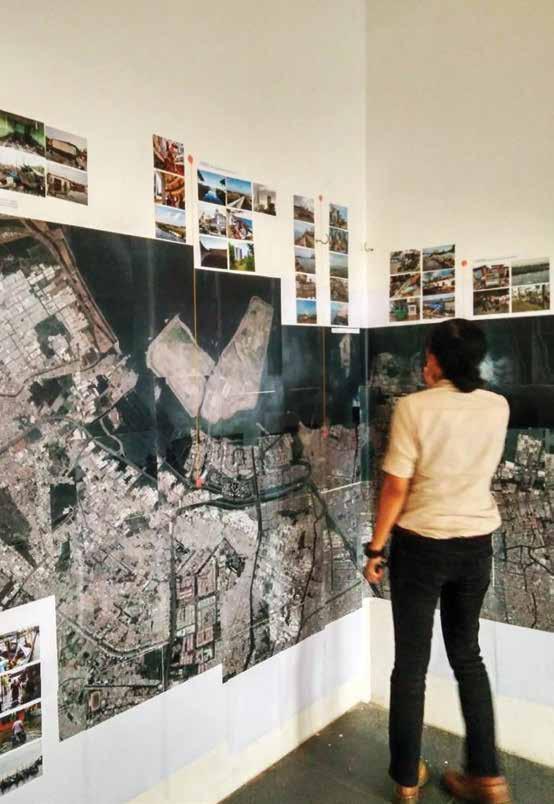
easier to implement, so this is part of the learning process for us. The provincial governor wanted to implement the contract, but apparently, he could not do that because one cannot pursue a discriminatory policy that only applies to specific kampungs, and so he had to make a city-wide policy based on the contract, which was our aim in the beginning. That’s another part of the learning process for us, in which the real victory was when he decided to do city-wide community planning instead of only for 25 kampungs.
Question: How do citizens of Jakarta relate to issues of climate change in Jakarta?
Elisa Sutanudjaja: You cannot really say “climate change” if you have conversations with specific populations in Jakarta. You have to change the term of climate change into different terms. For example, if you have a conversation with kampung residents, they will have no idea what climate change is, but they will have an idea about why the rain is more severe and more frequent than before and why the flood is increasing. Then they will have full engagement in such a discussion. But if you suddenly come and ask, what do you think about climate change, I don’t think they will bite, or they will answer anything about that, or even know what you were talking about. So it really depends on who is the audience and where they live. If you live in the coastal area then you answer the question about the wind or about the rain, but if you live in the residential complex then ask about the quality of water because it’s related and because the water is coming from far away: “Why is the quality getting worse and worse?”
AbdouMaliq Simone: It’s difficult to say that anything like climate change actually exists as some kind of univocal phenomenon. I mean it is a multiplicity of different kinds of processes that are intersected and experienced by different populations in different ways, and I think that the abstraction of climate change just doesn’t have very much resonance in terms of the way in which
36
Co-Design as Engagement with the City: Rujak Center for Urban Studies, Jakarta
many inhabitants experience the changes that they do recognize and that have substantial implications for them.
Question: I am curious about the process of community-action planning as you presented early on. To what extent did the community planning process reach its consensus?
Elisa Sutanudjaja: There are different types of involvement in different matters. For example, in one kampung, there were 241 families, and it would be complicated to have 241 families in all participatory planning processes. The way it usually works is that you always have to prepare before you start the formal community planning process. First you have to make sure that you have a team within themselves and that they choose their own team. Then, they do community mapping together as a team, and we as community organizers do it together with them doing
Community involvement takes many different guises, such as this smaller-scale workshop with local residents. Source: Rujak Center for Urban Studies.
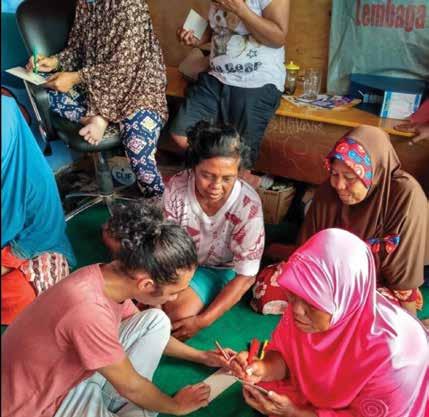
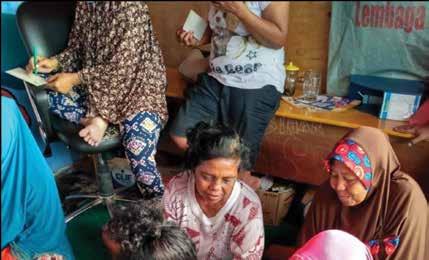
37
by Elisa Sutanudjaja and AbdouMaliq Simone
Figure 2.5
rapid assessment procedures, also called RAP. Then we train the kampung team about specific issues like building regulations or zoning laws or cooperatives. For example, one of the most significant achievements was when the kampung team managed to argue with the government about specific activities that can’t be allowed in that area. The mothers in the kampung proposed to set up a community kindergarten but the local government officials said no. However, they managed to access a provincial Jakarta website and showed that this is actually allowed in this area because the zoning says so. So the local government officials didn’t know but the mothers knew, which I think was one of the proudest moments for me because they managed to argue about a specific case. After the training, they have communitybased activities, such as a series of meetings based on the analysis to reconstruct the history together. In this process, there are larger meetings and when we do the work plan, the kampung team works together with us at Rujak. From that we come up with design guidelines and subsequently the architects in Rujak, and sometimes the residents themselves also make models, to show what they really want. Then we come up with an architectural design and proposal for the government.
Question: Are there areas of expertise or skill that your organization would want to connect more to? This could be additional expertise or skill that Rujak may not have now but it would be beneficial if you connected more to those.
Elisa Sutanudjaja: It would be very nice if we can have more connection with economists or people who understand financial accounting. Because when we are doing a lot of research about issues such as land that is owned by the developers, one has to read a lot of financial statements and to understand the details because the difference is often in the details, such as who owns which assets (e.g., land and buildings) and how they operate.
38
Co-Design as Engagement with the City: Rujak Center for Urban Studies, Jakarta
Understanding and Studying the Public Realm
Public Realm Ethnography:
03
Alasdair Jones
I am a Senior Lecturer in the Department of Geography at the University of Exeter. I am an interdisciplinary social scientist with expertise in the fields of urban studies, including sustainable urbanism, and program evaluation. My research aims to use, refine, and develop empirical approaches that enable the generation of insights into critical questions concerning urban planning, urban public space, and public policy programs.
Alasdair Jones: For this talk, I want to think about ways we might ethnographically study public realm settings, which we can think about as a particular typology of social setting in cities. Empirically, my work builds on an ethnographic study of London’s South Bank, which is a riverside public space next to a set of arts institutions in central London. I conducted a fouryear ethnographic study of this space, and I was interested in its production and reproduction, its formal production and informal production, its regulation, and its use as a public space. After that study, I’ve developed various themes including an interest in play in public space, in the curation of public space, in the distinction between the everyday and the exceptional in public realm settings.
I would argue that public realm ethnography is a kind of interdisciplinary process. You’re interested in social relationships but also in the spatial constitution of those, and in the social constitution of space. This is the kind of dialectical idea that Henri Lefebvre articulates well and that is evident in studies characterized by greater attention to the relationship between the social and spatial dimensions of the setting under study. This is how I think about public realm ethnographies. I would say what a public realm ethnography is trying to do is a form,
40 Public Realm Ethnography: Understanding and Studying the Public Realm
spatio-analysis, as Ed Soja defined it, or the analysis of the social production of social space.
Participant observation in the public realm is particularly challenging, I argue. Participant observation is a method in which a researcher takes part in the daily activities, rituals, interactions, and events of a group of people, as a means to learn the explicit and tacit aspects of their life routines and cultures. In the public realm however, social relations are characterized by a variegated space-time of aggregation. There’s likely to be multiple groups, not to mention individuals. They are co-present at any given time and using the space over time. Social phenomena, activities, rituals, interactions, and so on, in which a researcher might participate, are definitively heterogeneous and fleeting. You can’t participate in all of these things at the same time.
The methodological questions this poses are, “What activities or what groups can, or should, the ethnographer participate in during their field work? How can a deep understanding of the cultural significance of social activities be generated if practitioners are transient and the activities are fleeting? How can we understand the experience, value, meaningfulness of being in the public realm?” And finally, “How can a fieldworker meaningfully participate in being alone in public?”
My interest as a methodologist is in how public realm ethnographies are methodologically carried out. I’m interested in the things that public realm ethnographies find, but I’m particularly interested in how they’re actually done. This interest supplements reflections on my own research experience, with a review of accounts of in-situ fieldwork in similar sorts of studies. These are studies that share an assumption that space is socially constructed as well as materially embodied. These studies have a mutual interest in empirically exploring how urban public space is experienced and rendered meaningful by users. They’re interested in exploring how such space is produced and produced as public, not only formally through its design, planning, and management, but also
by Alasdair Jones 41
through its everyday use or social practice. One of the features of these studies is that they’re often mixed-method approaches, combining different sorts of data collection and analysis, to approximate an ethnographic study.
What are some of the things we can draw out from public realm ethnographies through reflecting on some of their principles? I’ve got four here.
First, public realm ethnographies are characterized by the primacy of the visual, the predominance of non-participant observational data collection. Secondly, observational data collection tends to be sequential and iterative, characterized by a shift in focus from the macro to the micro, and from fixed to flexible. We’re moving between different modes of data collection. Thirdly, research is characterized by a combination of systematic, non-participant observation of research at defined spatial zones (such as intensive observation of particular social phenomena) and an itinerant
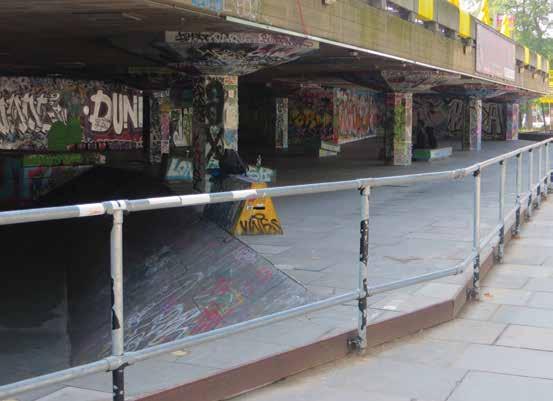
42
mode of ethnographic being or hanging out in public space. If I was to come up with a term that’s the equivalent of participant observation in public realm ethnography, it would be the idea of, (co-)present cognition, in which data is collected using field notes and field diaries through an emphasis on physical co-presence in the field, and through the markedly reflexive multisensorial and perambulatory, or walking-based recording of data. Fourth, public realm ethnographers supplement their observational data with the collection of typically short intercept interviews with others co-present in the public realm setting. We can expect to have shorter interactions with people, rather than lengthy talks with them.
The public realm does have exceptional moments where it has incredibly powerful repercussions for society, but at the same time it has a kind of everyday meaningfulness that we should be attentive to as well. In terms of the former, we might ask why are some spaces more amenable to activists and exceptional events than others? My sense is that in the case of the Southbank Centre in London, it has been a site of various forms of protest in the past because it was an arts institution, it has a visual arts gallery, a music space, a concert hall, theater, and is open to other imaginations (including regarding the ways that public realm can be used).
That may be a very niche example, but it offers one possible explanation for why some spaces are more amenable to activists than others. In order to identify and understand such exceptional examples of public realm, we have to address questions such as, “How is that space constituted? What sort of area is it in? What sorts of institutions surround that space? And what does that mean for how the space is perceived by the public, but also perceived by those formally responsible for the management of that space?” For example, one of my opinions is that the ownership of a space does not necessarily designate that space as public realm or private realm. It’s actually, in some ways, the use of the space that we should be attentive to.
by
43
Alasdair Jones
Co-Design as Long-Term Process:
Hasiru Dala, Bengaluru 04
Nalini Shekar
My name is Nalini Shekar, and I co-founded Hasiru Dala, which means “green force” in the regional Kannada language, and which is an organization that works with the waste pickers primarily in Bengaluru, India. Waste pickers are people who pick up recyclables on the street, which is what we throw as waste, and with their labor they sort, grade, and make it into a tradable commodity. Our main objectives at Hasiru Dala are to provide space for these workers within the formal solid-waste management system of the city by working with wastepickers who are part of the informal sector and to promote appropriate, decentralized, and cost-effective solutions for solid-waste management and decent livelihoods.
Neha Sami
I am Neha Sami and I am currently faculty at the Indian Institute for Human Settlements in Bangalore, India, where I teach on questions of governance and sustainability and anchor the Research Program. My research focuses on the governance of infrastructure, especially mega-infrastructure in the context of post-liberalization urban India. I also work on questions of environmental governance particularly at the sub-national scale, focusing on institutional analysis and state capacity. I am a corresponding editor for the International Journal of Urban and Regional Research, and have served on the editorial collective of Urbanization.
Nalini Shekar: There is a huge perception in India that waste pickers are dirty, and that they don’t know anything. They are not educated. We are changing that perception to acknowledge
45
that they’re in fact semi-skilled workers and that they know more than you and me about waste material in order to make it into a tradable commodity and raw material for the recycling industry. We don’t call them waste pickers; we call them robust entrepreneurs and silent environmentalists. And we consider their views to be design tools to move forward and make changes. We aim to do this through both research and implementation. Research is always important: through our analysis, we showed that the city of Bengaluru is saving almost 8.2 million Indian rupees from its municipal budget because of the informal work that waste pickers do through the collection and transportation of recyclable materials that are recovered from municipal solid waste.
One of the things that we at Hasiru Dala were able to demonstrate early on was the establishment of Dry Waste Collection Centers as decentralized infrastructure for waste collection and sorting. These are places where inorganic waste like paper, plastic, cloth, metal, and glass are aggregated for the formal collection system. These Centers are run by waste pickers who are otherwise not integrated in the formal system. It is also important for Dry Waste Collection Centers to look aesthetically attractive as well as functional, particularly given the assumption around waste management and waste picking being ‘dirty’ or ‘unclean’ work. We used a mural to paint portraits at these Centers of the people who work there. We are also working on educating citizens through awareness building among the wider public about waste pickers and the critical service they perform for the city.
Another important aspect of our work at Hasiru Dala is to negotiate with the municipal government of Bengaluru in ways that are helpful to waste pickers as well as citizens. We have created a range of spaces for waste pickers to contribute through dialogue with multiple stakeholders as well as petition for their rights to the judiciary and the court system. For example, in 2011 when we asked the local commissioner for decentralized infrastructure
46
Long-Term Process:
Co-Design as
Hasiru Dala, Bengaluru
for inorganic waste management, he said “Bengaluru is such a big city, how can we allocate space for Dry Waste Collection Centers in every administrative ward?” However, through constant dialogue and negotiation, we have now created 166 Dry Waste Collection Centers throughout the city. This space is given by the city to the poor to provide their utility services and it has taken about 10 years to create these physical spaces. The bylaws of the city have been amended to now say that all the dry and inorganic waste will be collected only by waste pickers or a small women’s collective. We have managed to change the policies. All this happened because citizens demanded it. We partnered with citizens to demonstrate how waste pickers were beneficial to sustainable waste management and to streamline collection services, and those efforts helped make it happen.
Waste pickers and their work are often invisible and unacknowledged. An important part of our mission at Hasiru Dala is to change this. In addition to pushing for policy changes, we are also aiming to make this work more visible in public spaces around the city. One illustration of this is a recently completed mural on
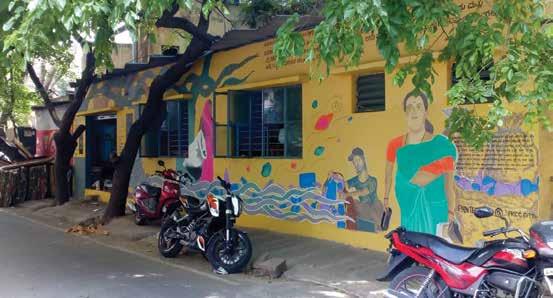
47
Figure 4.1
Dry Waste Collection Center painted in a colorful pattern.
Source: Hasiru Dala.
its housing policies are developed at three levels: at the municipal, state, and federal levels.
Co-design as a Challenge to Power Structures
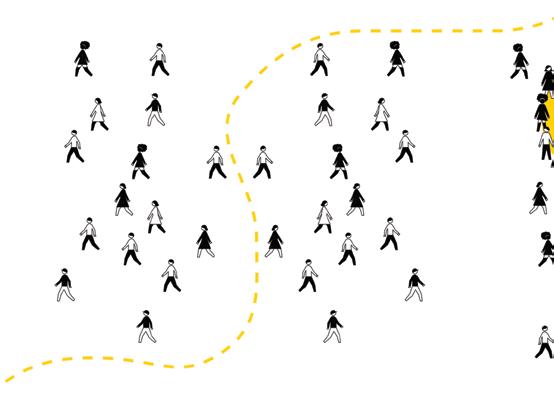
Our topic at the symposium addresses co-design as a challenge to power structures. That is, how from popular movement and grassroots organizations, we can challenge, contest, and contribute to the transformation of existing power structures, especially structures that are exclusionary and elitist.
Evaniza Rodrígues: Here it is important to think in different yet equally important dimensions. The first is the form of interventions
Co-Design as Contestation of Power: União Nacional por Moradia Popular, São Paulo
that build social fabric. We know that the strengthening of organizations comes from the people, from people’s territorial settings, and from their interests. From there we can organize ourselves and develop proposals to assert those rights that are denied to us. We must recognize that these processes are always long because we first have to understand our situation as a collective situation, meaning that the problem affects me as well as the person next to me, my neighbor. In addition, these processes are generally very complex because they involve compounding and often clashing interests. For example, in one occupation that took place where we had many undocumented immigrants, they were afraid both of being evicted and of being regularized, as this implied the risk of being discovered as undocumented and being expelled from the country.
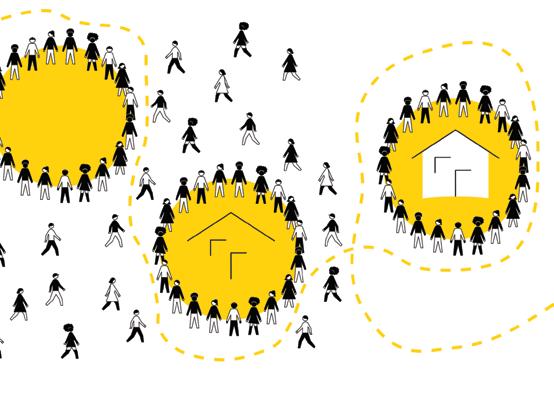 by Evaniza Rodrigues and Fernando Lara
Figure 5.1 Process of the Social Construction of Urban Habitat. Source: Henrique Geddo.
2030, Cape Town
by Evaniza Rodrigues and Fernando Lara
Figure 5.1 Process of the Social Construction of Urban Habitat. Source: Henrique Geddo.
2030, Cape Town
Lorna Fuller: Building solidarity is an inter-generational thing as I have found here in South Africa. For example, we’re looking to activists from the anti-apartheid era to support the younger activists because many of the struggle issues are similar and they have a lot of knowledge of how things work. Another example is the African Climate Alliance, which is a group of young people who manage it and make the decisions, but in the background are some of the older generations who are there to support, to be mentors, to offer advice, and to do some practical stuff as well, such as to edit some of the op-eds that they write. I think young people are feeling exhausted and they feel like we are handing the burden of climate change specifically on to them to fix. It’s like, “Here, we made a mess, you guys sort it out.”
Question: I’m very interested in the question of time that came up yesterday in co-designing publics. Can you tell us a little bit about how you started your effort, your initiative, the organization, and how it has evolved over the years?
Lorna Fuller: For us to get meaningful participation in our communities or for our community activists to be able to participate, it takes a long time for them to build
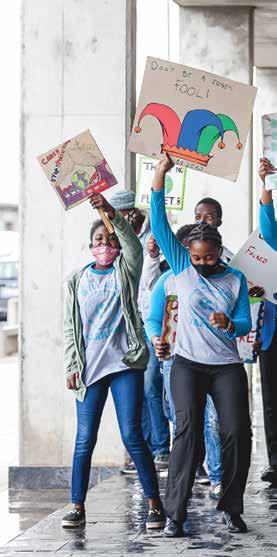
88
Co-Design as Participation: Project 90 by
Figure 8.2
YouLead Warriors: Young climate leaders mobilizing for their future. Source: Project 90 by 2030, 2020.
their knowledge and to build their confidence. We’ve been working since 2007 in Cape Town and it’s a lot of learning and re-learning. And we are learning by organizing but sometimes we make mistakes and sometimes we have small victories.
The current group of 12 activists have been working together since 2018 and we have great relationships with them. They
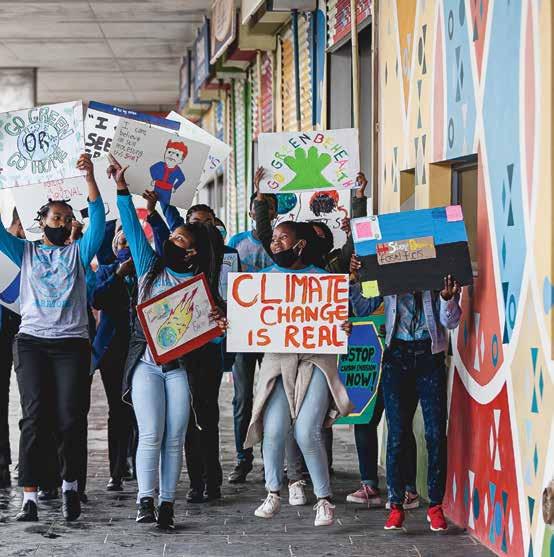
I am Professor and Chair in Urban Design at Cardiff University in the UK, and Director of TRULAB: Laboratory for Designing
Urban Transformation, which was founded in New York City. I describe myself as an activistscholar-practitioner, because being an activist means coming from a mindset that recognizes real change must be systemic and long term, because being a scholar means acknowledging the significance of deep understanding (i.e., research) and of principleand pattern-making (i.e.,
13
ASEEM INAM
Epilogue
Aseem Inam
I want to wrap up our gathering at this international symposium with a few comments. As Evaniza Rodrigues said quite powerfully earlier, “We are changing the world and changing the way that the world is changing.” This brings us to the last question in Charlotte Lemanski’s thought-provoking slide: “What is the hope of co-design? Where is the hope of co-design?” I think hope is not just in the future; it’s very much in the present. All the amazing work that we saw presented in the workshops earlier and then at this symposium is emblematic of hope, which is happening now. The remarkable work that all of you are doing in these cities (i.e., Bengaluru, Cali, Cape Town, Jakarta, Phnom Penh, São Paulo) is inspiring for all of us. That is one of the principal goals of this research network—to learn from each other.
We bring about change in small ways and large ways, sometimes collectively, sometimes individually. The hope is right here in front of us now, right in front of our noses, and what we have to do is to constantly look for it and build on it, as we move forward. Finally, while there was quite a bit of discussion about “co-design,” we should not forget an equally powerful concept and practice, which is that of “publics,” as described in the opening presentation. Publics are heterogeneous and fluid, and if we understand this reality, we can organize and mobilize our communities around specific issues and over time in a heterogenous and fluid manner. We all belong to and co-create multiple communities, and we can similarly co-design multiple and potent publics in places that we care about.
127
ORO Editions
Publishers of Architecture, Art, and Design
Gordon Goff: Publisher
www.oroeditions.com
info@oroeditions.com
Published by ORO Editions
Copyright © 2023 Stuart Cohen and ORO Editions.
All rights reserved. No part of this book may be reproduced, stored in a retrieval system, or transmitted in any form or by any means, including electronic, mechanical, photocopying or microfilming, recording, or otherwise (except that copying permitted by Sections 107 and 108 of the U.S.
Copyright Law and except by reviewers for the public press) without written permission from the publisher.
You must not circulate this book in any other binding or cover and you must impose this same condition on any acquirer.
Author: Aseem Inam
Book Design: Ahankara Art
Managing Editor: Jake Anderson 10 9 8 7 6 5 4 3 2 1 First Edition
ISBN: ???
Color Separations and Printing: ORO Group Ltd. Printed in China.
ORO Editions makes a continuous effort to minimize the overall carbon footprint of its publications. As part of this goal, ORO Editions, in association with Global ReLeaf, arranges to plant trees to replace those used in the manufacturing of the paper produced for its books. Global ReLeaf is an international campaign run by American Forests, one of the world’s oldest nonprofit conservation organizations. Global ReLeaf is American Forests’ education and action program that helps individuals, organizations, agencies, and corporations improve the local and global environment by planting and caring for trees.
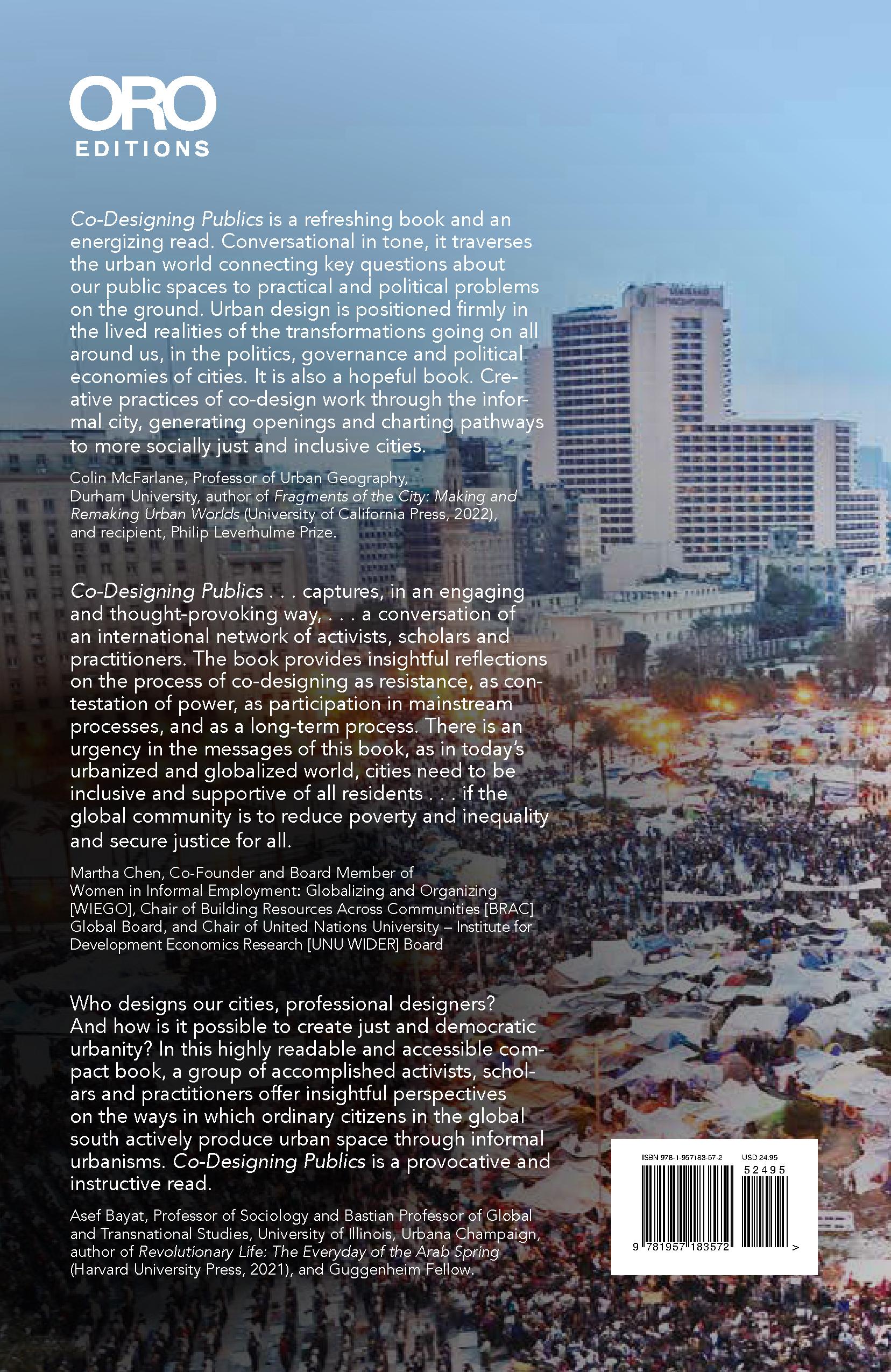







 by
Sutanudjaja and AbdouMaliq Simone
Figure 2.3
Example of collective and collaborative efforts.
Source: Rujak Center for Urban Studies.
by
Sutanudjaja and AbdouMaliq Simone
Figure 2.3
Example of collective and collaborative efforts.
Source: Rujak Center for Urban Studies.






 by Evaniza Rodrigues and Fernando Lara
Figure 5.1 Process of the Social Construction of Urban Habitat. Source: Henrique Geddo.
2030, Cape Town
by Evaniza Rodrigues and Fernando Lara
Figure 5.1 Process of the Social Construction of Urban Habitat. Source: Henrique Geddo.
2030, Cape Town


